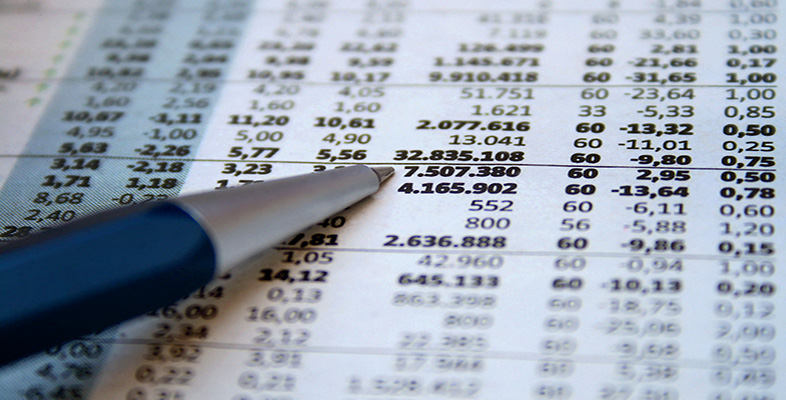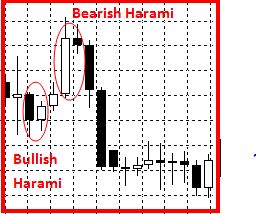THE OUR BLOG
Discuss the meaning of investment multiplier What can be its minimum
Posted by mhengineering in Форекс Брокеры

The government can now assess its effect on the economy as a whole and especially on the level of employment. A company which produces consumer goods may be able to forecast how the overall rise in demand will affect the demand for its production. However imports do not add to domestic expenditure and is unlikely to have any income and employment effect. People often save money by keeping idle cash balances in banks. This idle money does not come into circulation and is unlikely to lead to an increase in consumption spending.
After a year of production with the new facilities operating at maximum capacity, the company’s income increases by $200,000. This means that the multiplier effect was 2 ($200,000 / $100,000). Simply put, every $1 of investment produced an extra $2 of income. The concept has brought into focus the important point that employment is directly created by investment. It has also clearly revealed that income is generated throughout the economy due to secondary consumption spending (which is induced by an initial or primary act of investment).
Thus an increase in investment of Rs. 2500 crores is desirable. This amount is known as the deflationary gap, that is, the initial increase in aggregate demand which is necessary to eliminate unemployment. At high levels of income the proportion of income spent falls.
Investment Multiplier Assumptions
Like individuals, businesses must “consume” a significant portion of their income by paying for expenditures such as employees’ wages, facilities’ rents, and the leases and repairs of equipment. A typical company might consume 90% of its income on such payments, meaning that its MPS—the profits earned by its shareholders—would be only 10%. As you can see, this cycle can repeat itself through several iterations; what began as an investment in roads quickly multiplied into an economic stimulus benefiting workers across a wide range of industries.

In other words, a multiple of a change in investment equals a change in income. A multiplier explains how many times an increase in investment causes an increase in national income. AY represents change in income, and AI refers to a given change in investment. The fiscal multiplier measures the effect that increases in fiscal spending will have on a nation’s economic output, or gross domestic product . Looking at the money multiplier in terms of reserves helps one to understand the amount of expected money supply. The basic premise upon which the investment multiplier works is that one individual’s expense is another person’s income.
What is Investment Multiplier and How To Calculate It?
Most people sell these long-term credit instruments when in distress and incur capital losses. So such transactions are unlikely to raise society’s total consumption appreciably. For the concept of the multiplier to be meaningful it is also necessary to argue that there is no change in MPC at frequent intervals, i.e., at least during the process of income- generation. Suppose that with investment expenditure unchanged both average and marginal propensities to consume drop to 3/4. (b) The Rs. 20 decline in investment is the change in autonomous spending. If, for instance, 1/5 or 20 per cent of income is withdrawn through saving, then the rise in income will come to a halt when income has risen by Rs. 5,000 crores.
According to Samuelson, “an endless chain of secondary consumption spending is set in motion by a primary investment spending. The white bar in each period shows how much income has been generated in the previous period. In other words, income increase will raise the volume of leakages (in the form of new savings).
How Much Is Long-Term Care Insurance? – Investopedia
How Much Is Long-Term Care Insurance?.
Posted: Mon, 17 Apr 2023 07:00:00 GMT [source]
When governments spend money, a chain of consumption and expenditure increases the total income many times its original investment. Multiplier effects describe how small changes in financial resources (such as the money supply or bank deposits) can be amplified through modern economic processes, sometimes to great effect. John Maynard Keynes was among the first to describe how governments can use multipliers to stimulate economic growth through spending. In fractional reserve banking, the money multiplier (or deposit multiplier) effect shows how banks can re-lend a portion of the deposits on-hand to increase the amount of money in the economy. In this way, commercial banks have a large degree of influence on economic outcomes. 1 increase in autonomous investment expenditure, equilibrium national income increased by Rs. 5.
Is a High Multiplier Good?
There is no lag between receipt of income and expenditure on consumption. For realizing the full value of the multiplier it is not enough for gross investment to be positive. Gross investment to the extent of depreciation always take place in any economy.
Capital structure is the particular combination of debt and equity used by a company to funds its ongoing operations and continue to grow. If their marginal propensity to consume (MPC) is 3/4th or 75%, they will spend Rs 75 crore (3/4th of 100) on new consumption goods. This process will continue until there remains no scope for further consumption and savings. After this, one can calculate the number of times the income is multiplied to know the investment multiplier. The extent of the investment multiplier depends on the decisions taken by households with respect to spending and saving.
In economics, a multiplier broadly refers to an economic factor that, when changed, causes changes in many other related economic variables. The term is usually used in reference to the relationship between government spending and total national what can be the maximum value of investment multiplier income. In terms of gross domestic product, the multiplier effect causes changes in total output to be greater than the change in spending that caused it. The money supply multiplier effect can be seen in a country’s banking system.
Factors Preventing the Investment Multiplier:
The increase in investment raises the income of the people, a portion of which is used by people for consumption. The value of MPC; however, determines how much of the new income is to be spent on consumption. People will spend a large portion of their increased income on consumption in the case of higher MPC. However, people will spend a smaller percentage of their increased income on consumption when the MPC is low.

Thus, this will further increase incomes of some other people equal to Rs. 64 crores. This will increase incomes of the people equal to Rs. 100 crores. The people who receive Rs. 100 crores will spend a good part of them on consumer goods.
Thus if we know the value of the MPS we can predict the effect of a change in investment upon national income. The shaded bar shows the increase in the amount per period, which is 4/5 of the income of the previous period. The total height of the two parts of each bar shows total income in the relevant period. Total income shown by the last bar is sum of primary investment and secondary consumption. Since we are dealing with flows of expenditure, a rise of Rs. 1000 crores in planned investment on new factory construction implies an extra annual expenditure of Rs. 1000 crores on new factories.
Investment increases productive capacity which, in turn, raises the level of output, employment and income. As a result, the concepts of MPC (Marginal Propensity to Consume) and MPS (Marginal Propensity to Save) are intertwined with this multiplier. A higher value of MPC will correspond to a higher value of investment multiplier and vice versa. The multiplication occurs because the income received from investment is spent on consumption.
California Budget: Understanding the Governor’s 2023-24 Proposal – California Budget & Policy Center
California Budget: Understanding the Governor’s 2023-24 Proposal.
Posted: Tue, 10 Jan 2023 08:00:00 GMT [source]
Each type of multiplier is individually defined and often has different metrics that define success. Very broadly speaking, most multipliers that are high indicate higher economic output or growth. For example, a higher money multiplier by banks often signals that currency is being cycled through an economy more times and more efficiently, often leading to greater economic growth. If banks are efficiently using all of their deposits, lending out 90%, then reserves of $65 should result in a money supply of $651.
The information contained in this article is for general purposes only and not a complete disclosure of every material fact. The article does not warrant the completeness or accuracy of the information and disclaims all liabilities, losses and damages arising out of the use of this information. Readers shall be fully liable/responsible for any decision taken on the basis of this article. A high equity multiplier is indicative of the fact that a company has a higher level of debt. In contrast, a low equity multiplier means that it relies less on credit. Moreover, this multiplier is also referred to as financial leverage ratio.
The multiplier is, therefore, the ratio of increment in income to the increment in investment. If ∆I stands for increment in investment and ∆Y stands for the resultant increase in income, then multiplier is equal to the ratio of increment in income (∆K) to the increment in investment (∆I). Secondly, the multiplier analysis describes the effect of an increase in autonomous investment on national income. Changes in consumption result in a change in investment spending.
- If that same worker has an MPS of 30%, that means they would save $0.30 out of every dollar earned, on average.
- In other words, a multiple of a change in investment equals a change in income.
- When the reserve requirement decreases, the money supply reserve multiplier increases, and vice versa.
That tip would now be the benefit of the waitstaff who may buy a crafted item at a local market and increase the income of a local artist. As currency flows through an economy, more than one individual or entity may residually receive benefit from a financial instrument. Therefore, the single tax benefit is said to have a multiplier effect on the economy. That is, if investment like consumption depends on income or its change, the multiplier effect will be stronger.
